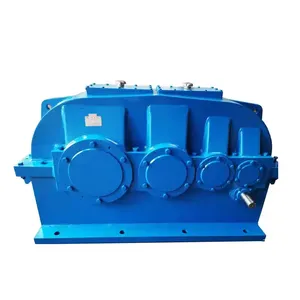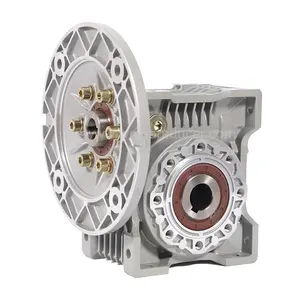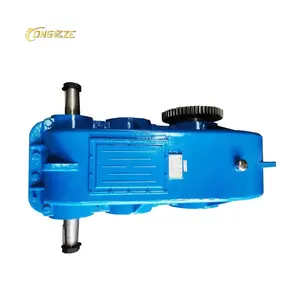What is automotive Gearbox Guide: Types, Functions, And Maintenance Tips
An automotive gearbox is an essential component in the powertrain of a vehicle, serving to transmit torque and rotational force from the engine to the wheels. Essentially, it is a system of gears that provides different speed ratios to optimize the vehicle's performance under various driving conditions. This mechanical marvel is crucial for anyone operating a vehicle with a manual transmission, automatic transmission, or even a semi-automatic gearbox.
The automotive gearbox works on the principle of mechanical advantage. It utilizes a series of gears with differing sizes to change the output speed or torque of the vehicle. When the driver shifts gears (either up or down), the gearbox disengages the current gear and engages the new one almost simultaneously, providing a smooth transition to the new speed or power ratio. It's a combination of the right gear selection and the vehicle's power that enables efficient and effective operation.
This system is designed for drivers who require control over their vehicle's performance characteristics, such as acceleration, towing capacity, or fuel efficiency. Whether for daily commuters, off-road enthusiasts, or professional drivers, understanding how the automotive gearbox works is fundamental to optimizing their vehicle's capabilities.
Types of Automotive Gearbox
The automotive industry offers a variety of gearbox types tailored to different vehicle models and usage scenarios. Here are some common types:
-
Automatic Transmission Gearbox: This type of gearbox requires minimal input from the driver, as the system can control gear changes automatically. It's particularly popular for its ease of use and smooth operation. Automatic transmissions are common in modern passenger cars.
-
Manual Transmission Gearbox: Also known as a standard transmission, this gearbox requires the driver to manually change gears using a stick shift and a clutch pedal. It provides more direct control over the vehicle's power delivery, making it a favorite among driving enthusiasts.
-
CVT (Continuously Variable Transmission) Gearbox: A type designed for efficiency, CVT gearboxes use a system of belts and pulleys to vary gear ratios instead of fixed gears. They offer a balance between the efficiency of manual and automatic transmissions.
-
Dual-Clutch Transmission Gearbox: Offering faster gear changes than automatics and smoother performance, dual-clutch gearboxes are often found in high-performance and luxury vehicles.
-
Tiptronic/Manumatic Transmission Gearbox: These gearboxes combine the convenience of automatic transmission with some aspects of manual driving. They allow the driver to manually select gears without operating a clutch pedal.
How to choose automotive Gearbox Guide: Types, Functions, And Maintenance Tips
Selecting the right automotive gearbox for your business involves understanding the specific needs of your end-users and the variety of applications within your operational scope. Here's what businesses should consider:
-
Vehicle Compatibility: Ensure that the gearbox aligns with the make and model of the vehicle or machinery it will be paired with. This includes choosing between manual or automatic transmission based on user preference or application requirements.
-
Material and Customization: Some businesses may require customized solutions such as specific gearing ratios or ODM support. Material choices like iron or steel can impact durability and performance under different operating conditions.
-
Gearing Arrangement: The gearing arrangement affects how power is transmitted within the system. Bevel/miter or worm arrangements offer different torque outputs and rotational directions suited for various applications.
-
Size and Core Components: The physical size of the gearbox should fit within the available space while core components like gears and shafts must be made from reliable materials to ensure longevity.
-
Local Service Availability: Consider the location where your business operates. Access to service providers within your region can reduce downtime during maintenance or unexpected issues.
About automotive Gearbox Guide: Types, Functions, And Maintenance Tips on Alibaba.com
Alibaba.com stands out as an international marketplace connecting businesses with a vast selection of automotive gearboxes suitable for a wide array of vehicles and applications. With an extensive network of suppliers offering products from nearly 5,900 categories including various types of gearboxes made from durable materials like steel and alloy, businesses can find exactly what they need to keep their operations running smoothly.
The platform's commitment to facilitating global trade is evident in its user-friendly interface that supports multiple languages and mobile accessibility. This ensures that buyers can easily navigate through options and communicate with suppliers directly. Additionally, Alibaba.com's Trade Assurance service provides peace of mind by protecting payments until delivery is confirmed.
Whether you're looking for manual, automatic, or CVT gearboxes for manufacturing plants, machinery repair shops, construction works or any other industry requiring reliable power transmission systems – Alibaba.com offers a broad selection ensuring you can find high-quality products tailored to your specific requirements without the hassle of traditional sourcing methods.
Common FAQs for automotive Gearbox Guide: Types, Functions, And Maintenance Tips
What are the primary functions of automotive gearboxes?
Automotive gearboxes are designed to transmit the power generated by an engine to the drive wheels, enabling vehicles to move forward or backward. They typically provide a range of gears that can be engaged to optimize performance across various driving conditions.
How do I determine which type of gearbox is best for my industry's vehicles?
Consider the specific demands of your industry, such as towing, off-road driving, or fuel efficiency. Choose a gearbox that aligns with these needs, whether it's a manual, automatic, or CVT gearbox, and ensure it's capable of handling the power output of your intended vehicle applications.
What materials are commonly used in constructing automotive gearboxes?
Common materials include various alloys, cast iron, steel, aluminum alloy, and stainless steel. The choice of material affects the gearbox's durability, efficiency, and cost.
Are there gearboxes suitable for heavy-duty vehicles or trucks?
Yes, there are gearboxes specifically designed for heavier vehicles and trucks. They have robust construction and are often used in commercial settings where durability and high torque transmission are essential.
Can automatic transmissions be used in all types of vehicles?
Automatic transmissions are generally used in vehicles where there is a need to adapt the gear ratios without manual intervention. However, they are less common in smaller vehicles and are typically found in larger cars and trucks.
What is a CVT (Continuously Variable Transmission) gearbox and where is it typically used?
A CVT is a type of automatic transmission that uses a belt and pulley system to vary the gear ratio continuously. It's often used in vehicles where a consistent and efficient driving experience is desired, such as in snowmobiles or some types of tractors.
How do I maintain an automotive gearbox to ensure longevity?
Regular maintenance includes checking fluid levels, changing filters, and ensuring that the transmission is operating within its designed temperature and speed ranges. Refer to the manufacturer's guidelines for more specific care instructions.
What should I consider when choosing a gearbox for an electric vehicle (EV)?
For EVs, consider gearboxes that can handle high torque levels and provide regenerative braking. Additionally, choose a gearbox that is compatible with the electric motor and fits within the vehicle's design constraints.
How does gearing arrangement affect the performance of an automotive gearbox?
The gearing arrangement, whether worm, bevel/miter, or cycloidal, affects the performance by determining how the input and output shafts are aligned. Each type offers different trade-offs between efficiency, compactness, and torque handling.
Is it possible to have a gearbox customized for specific applications?
Yes, many suppliers offer customized support options such as ODM (Original Design Manufacturing) and OBM (Original Brand Manufacturing). These services allow businesses to tailor gearboxes to their unique application requirements.


































 浙公网安备 33010002000092号
浙公网安备 33010002000092号 浙B2-20120091-4
浙B2-20120091-4